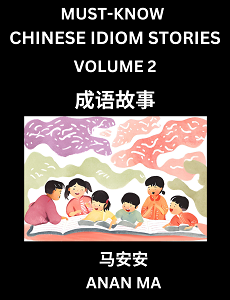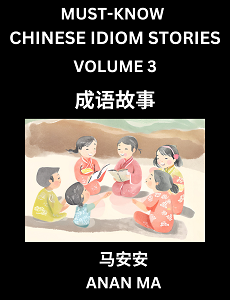Learn Chinese Idiom with Pinyin and English

- Idiom in Chinese-红男绿女。
- Pinyin of Idiom– hóng nán lǜ nǚ.
- Idiom’s Meaning in English– Men dressed in red and women dressed in green, referring to the fashionable or glamorous people. “Hong Nan Lu Nv” refers to a group of fashionably dressed people, particularly in ancient China where red and green were popular colors for men and women. The idiom captures the vibrant and colorful atmosphere of a festive occasion, where men and women dressed in their finest attire to celebrate. It often conjures images of bustling markets, festive events, or elaborate weddings.

Chinese Idiom Stories Books (HSK All Levels):
- Books to Learn Chinese Idiom Stories (Part 1)
- Books to Learn Chinese Idiom Stories (Part 2)
- Books to Learn Chinese Idiom Stories (Part 3)
Learn Chinese Idiom Story in English (成语故事的英文)
In ancient times, during a grand celebration in the capital city, all the men dressed in red clothes, while the women wore green skirts. This combination was extremely popular in the city, making it a symbol of fashion. When the celebration began, the men and women dressed in red and green walked onto the streets, their华丽装扮(gorgeous attire)attracting countless eyes. The entire city was immersed in joy and happiness.

Learn Idiom Story in Chinese (成语故事)
古时候,在京城的一次盛大庆典上,所有的男子都穿着红色的衣裳,而女子则身着绿色的裙裳。这种搭配在当时的京城极为流行,因此成为了时髦的象征。当庆典开始时,红男绿女们纷纷走上街头,他们的华丽装扮吸引了无数人的目光,整个京城都沉浸在一片欢乐和喜庆之中。

Learn Keywords with English, Simplified Chinese Characters, and Pinyin (关键词)
京城(Capital City): Beijing
庆典(Celebration): A grand ceremony
男子(Men): Males
红色(Red): Red
衣裳(Clothes): Clothing
女子(Women): Females
绿色(Green): Green
裙裳(Skirt): Skirt
流行(Popular): Fashionable
时髦(Trendy): Stylish
装扮(Dress): Attire

Pinyin of Idiom Story (故事的拼音)
Gǔ shíhòu, zài jīngchéng de yīcì shèngdà qìngdiǎn shàng, suǒyǒu de nánzǐ dōu chuānzhuó hóngsè de yīshang, ér nǚzǐ zé shēnzhe lǜsè de qún shang. Zhè zhǒng dāpèi zài dāngshí de jīngchéng jíwéi liúxíng, yīncǐ chéngwéile shímáo de xiàngzhēng. Dāng qìngdiǎn kāishǐ shí, hóngnánlǜnǚmen fēnfēn zǒu shàng jiētóu, tāmen de huálì zhuāngbàn xī yǐn liǎo wúshù rén de mùguāng, zhěnggè jīngchéng dōu chénjìn zài yīpiàn huānlè he xǐqìng zhī zhōng.





